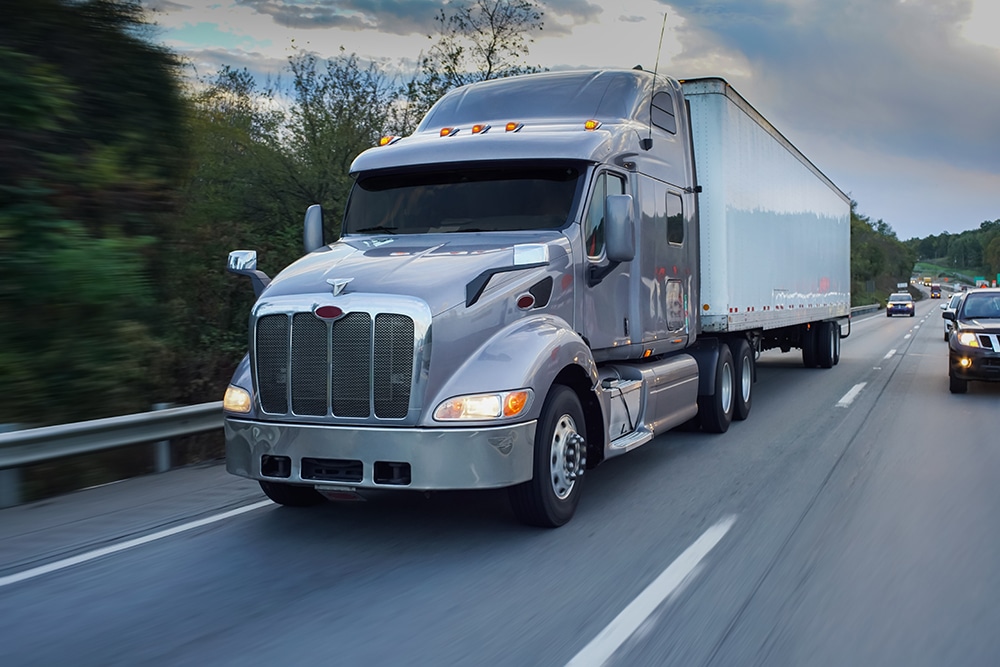How To Avoid Being in a Truck Accident

Illinois has 2,185 miles of interstate and multiple ports that receive and send international goods, making our state a major hub of commerce in the United States. While this is excellent for our local economy, it also forces drivers to share the road with a significant number of tractor-trailers from all around the country.
Data from the Illinois Department of Transportation shows that there were 11,741 semi-truck crashes in 2019. Of those, 100 were fatal and another 1,814 left victims with mild to moderate injuries. Another 311 caused incapacitating injuries, including broken limbs, chest and back injuries, head injuries, abdominal injuries, and more. If an injury prevents a victim from driving, walking, working, or otherwise engaging in activities they were capable of prior to the accident, it is considered an incapacitating injury.
While it is possible to recover compensation after a collision with a large truck, the attorneys at Schweickert Ganassin Krzak Rundio, LLP know that it is preferable to avoid being in a truck accident in the first place. If you regularly travel on Illinois’ interstates or around large commercial vehicles, be sure to follow our tips for avoiding a tractor-trailer collision.
Avoid Truck “No-Zones”
According to NHTSA, truck “no-zones” are the areas around a tractor-trailer “where crashes are most likely to occur.” These are the places where your vehicle will not be in view of the truck driver, leaving you vulnerable to being hit when the driver changes lanes or takes evasive action, such as suddenly braking.
Below are the location and size of a truck’s four no-zones:
- To the left of the truck for the width of one lane, starting near the cab and extending in a diagonal
- To the right of the truck for the width of two lanes, starting near the cab and extending in a diagonal
- In front of the truck, extending for 20 feet
- In the rear of the truck, extending for 30 feet
Avoid traveling in a tractor-trailer’s no-zones – driving in these no-zones puts you at an increased risk of being involved in a serious truck accident.
Don’t Cut Trucks Off
Under normal driving conditions, a fully loaded tractor-trailer traveling at 55 mph will travel for another 196 feet after applying the brakes before coming to a full and complete stop. If you “cut off” (merge into their lane without leaving sufficient room) a truck when passing or changing lanes, you are putting yourself at risk of being in a serious truck crash.
If you have to merge into a lane with a tractor-trailer, make sure to leave ample room. Remember to leave more room when traveling at high speeds or when there are adverse driving conditions, such as limited visibility or poor weather.
Always use your blinker to indicate a lane change, and do not merge if the truck driver appears to be speeding up or does not seem to notice you.
Keep Your Distance
The majority of fatal truck accidents are head-on collisions, which involve the front of the tractor-trailer colliding with the front of another vehicle. The second most common fatal truck accident occurs when a passenger vehicle collides with the back of a tractor-trailer in a rear-end collision. There are two main factors that make this type of collision so deadly:
- The front of the passenger vehicle may be crushed against the truck’s underride protection
- Part or all of the passenger vehicle may slide underneath the truck if its underride protection fails
Traveling behind a tractor-trailer limits your field of view, making it virtually impossible to see traffic conditions ahead. You cannot anticipate when you will need to slow down or stop.
Driving too close or tailgating a tractor-trailer is never safe. If you choose to do so, you may become involved in a serious or even fatal truck accident.
Change Lanes and Routes When Necessary
Even though truck drivers are supposed to go through rigorous training and testing to earn their commercial driver’s license (CDL), many still engage in dangerous, reckless, and negligent behavior behind the wheel. If a truck driver is speeding, weaving in and out of lanes, having trouble maintaining their lane, braking frequently, or otherwise acting in a way that may cause harm to others, prioritize your safety and get away from them as soon as you reasonably can.
This may involve changing lanes, taking an earlier exit, or allowing a speeding tractor-trailer to pass unhindered. If a truck driver’s behavior seems particularly erratic or dangerous, call 911 and report what you witnessed.
Be Cautious of Wide Turns
Tractor-trailers consist of two parts—the tractor, which houses the engine and the cabin where the driver sits, and the trailer, which is the rear portion that houses cargo. The tractor and trailer are connected by a coupling device called a fifth wheel. Some drivers have endorsements on their CDLs that allow them to pull two or three trailers.
To safely navigate turns (especially right turns), truck drivers often swing the front of the vehicle into adjacent lanes. This allows the driver to correctly move the two separate portions of the truck into the correct position and also lowers the risk of tipping over, which is common in vehicles with high centers of gravity.
If a truck has its right blinker on but is in the left or middle lane, stay back and allow it to complete its turn safely. If you proceed in the right lane despite the presence of a truck with its blinker on, you could be in the driver’s blind spot when it proceeds to complete its turn.
Have You Been Injured in an Accident?
Of course, passenger vehicle drivers are not the only ones responsible for preventing truck accidents. When a truck driver’s reckless, negligent, or dangerous actions cause a collision, the attorneys at Schweickert Ganassin Krzak Rundio, LLP have the experience necessary to hold the at-fault parties responsible.
If you were injured in a LaSalle, Peru, Ottawa or Princeton truck accident, contact our law offices today to schedule a meeting with one of our attorneys. During an initial free consultation, we’ll go over your legal options for recovering compensation and holding the trucking company responsible for the harm they caused.










